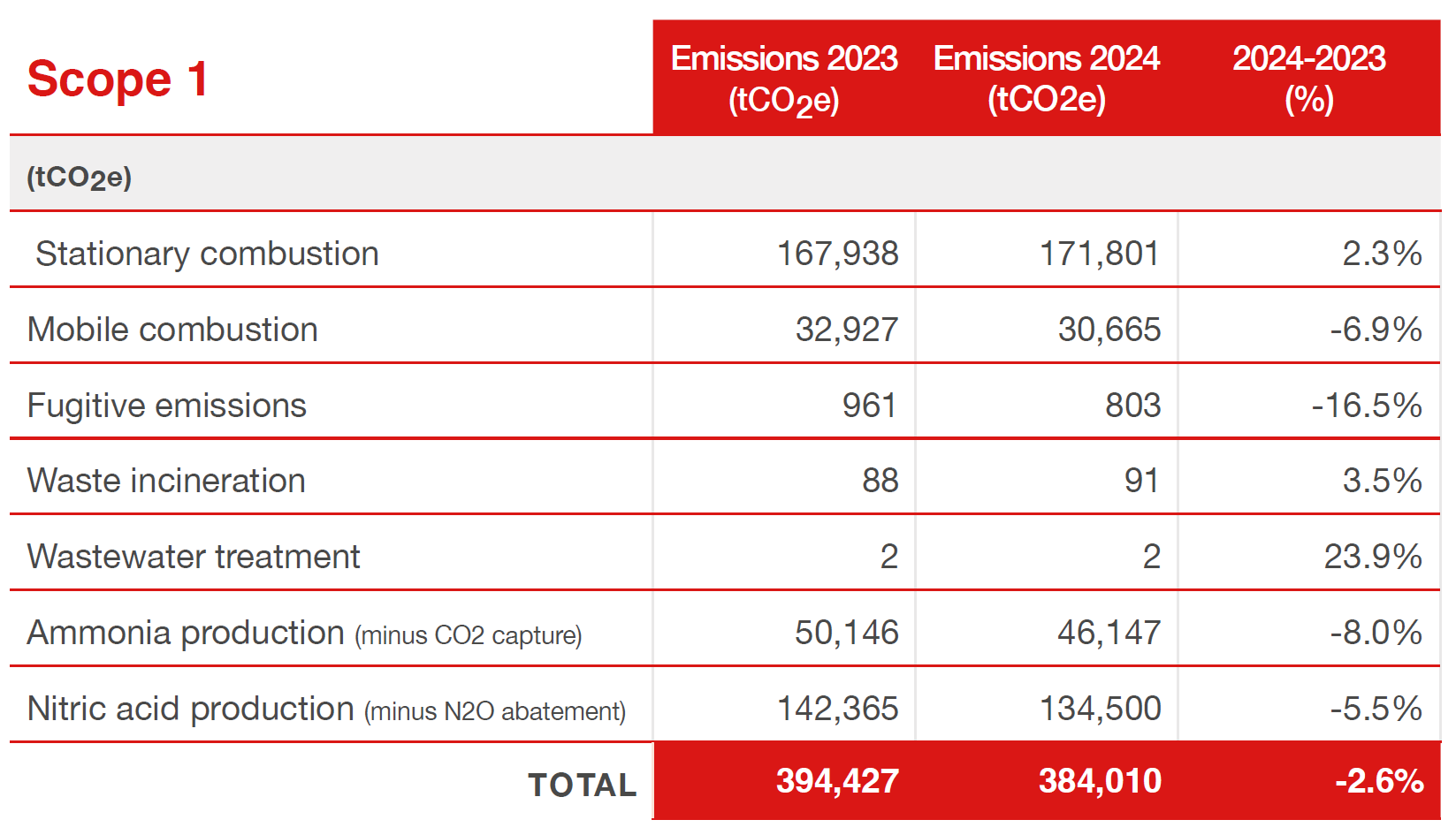The carbon footprint assessment represents a key part of the decarbonization of Austin Powder’s activities, as it enables us to understand the organization’s direct and indirect emissions, identify the areas with the greatest impact on climate change and define actions to mitigate these emissions.
In 2024, KPMG re-evaluated Austin Powder’s 2022 and 2023 emissions data to improve transparency and accuracy. Key updates included:
Updating USN’s N₂O Global Warming Potential to IPCC AR5 values, in line with EPA guidance, and applying changes retroactively.
Revising CO₂ capture data from ammonia production using invoice-based internal records, improving carbon footprint accuracy.
These refinements support Austin Powder’s decarbonization strategy with more reliable data.
In 2024, Austin Powder expanded its GHG inventory to include Zambia and new facilities across existing reporting units, such as PITIC and SWIF in Mexico, and emission data from Indonesia, Costa Rica, and Malaysia. Scope 1 and 2 emissions were updated with improved data, including internal transport at Red Diamond, LPG use in Argentina, and fuel for cross-border trips. Corrections were made to classification errors, unit misreporting, and double counting.
All emission factors were updated to reflect the latest data. Despite a 14% increase in ammonia production, total emissions dropped by 3.2% due to higher CO₂ capture at Juramento and reduced N₂O emissions.

In 2024, stationary combustion remained Austin Powder’s largest source of GHG emissions, totaling 171,801 metric tonnes of CO₂e (45% of total emissions). This was driven by energy-intensive ammonia production and lack of grid access at Juramento. USN and Juramento contributed 35% and 54% of stationary combustion emissions, respectively. Emissions rose by 2.3% from 2023, largely due to increased ammonia output at USN.
Process emissions from nitric acid fell by 5.4% due to lower production, while ammonia process emissions dropped 8% thanks to improved CO₂ capture at Juramento, despite a 14% rise in ammonia production. In total, 64,920 metric tonnes of CO₂ were captured and sold, reducing the ammonia process’s carbon footprint by 58%. Process emissions made up 12% (ammonia) and 35% (nitric acid) of total emissions in 2024.

Scope 2 emissions include indirect emissions associated with generating electricity, heat, or steam that a company consumes. In other words, these emissions arise from sources owned or controlled by another entity from which the reporting company purchases electricity, heat, or steam.
More than 87% of Austin Powder’s carbon footprint in 2024 is attributed to the USN and Juramento facilities, reflecting the nature of their activities (28.97% for USN and 56.34% for Juramento). Other significant contributors include the field operations in the USA, Red Diamond and Mexico, which account for 3.73%, 3.17% and 2.92% of the company’s carbon footprint, respectively. As a result, the US and Latin America regions as a whole account for more than 95% of the company’s total carbon footprint.

We are a traditional manufacturer of initiation systems for industrial blasting operations and an important technological and research base for production and further development of initiation systems.
Visit SiteAustin Powder Service CZ implements the latest technologies and products for blasting works, such as laser profiling, electronic modeling, and electronic detonators.